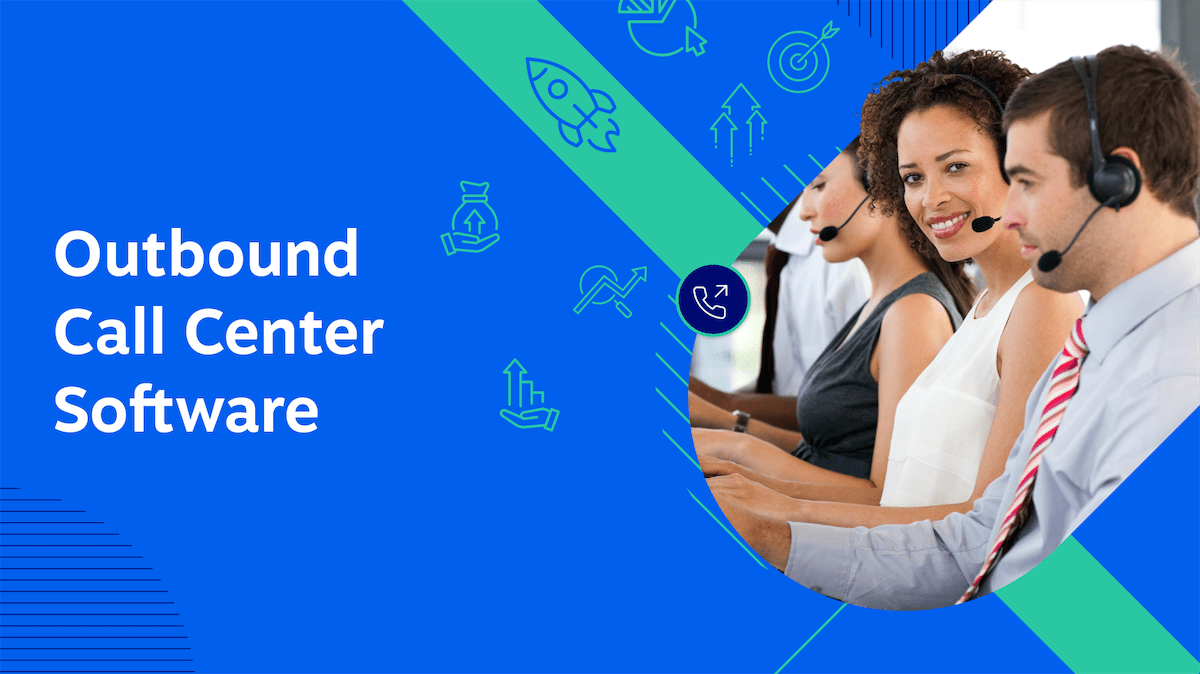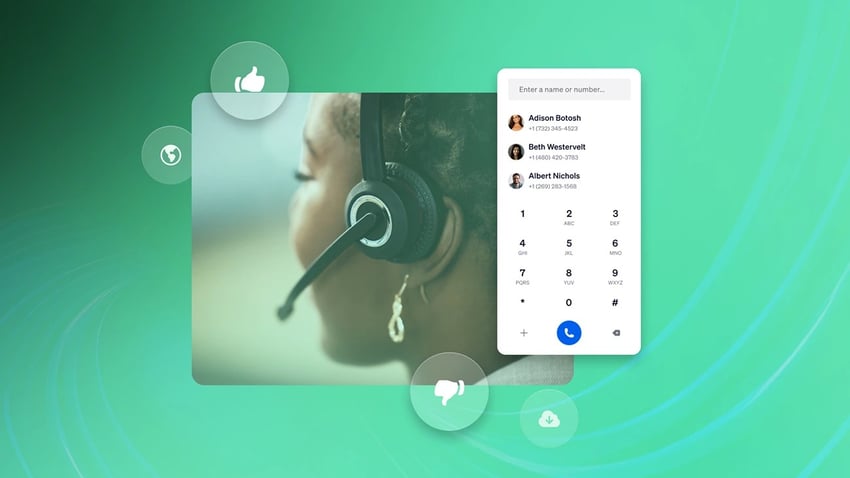Outbound sales teams don’t hit quota because of reps. It fails because the outbound call center isn’t built to move at the speed buyers expect today.
According to Nextiva, over 60% of consumers abandon a brand after just one or two bad service interactions, which means every outbound dial is either building a pipeline or quietly burning it. Modern outbound call center software hinges on reaching the right lead at the right moment with the proper context to close.
If you’re running large-scale sales campaigns, you need battle-tested cloud call center platform. It will provide all the tools and features required to coordinate call center campaigns across multiple channels, ensuring efficiency and consistently delivering the best customer experience.
What Is Outbound Call Center Software?
Outbound call center software is a specialized tool designed to facilitate and manage a call center’s outbound communication activities. It automates and streamlines the process of making calls to customers or prospects for various purposes such as sales, customer updates, appointment setting, or market research.
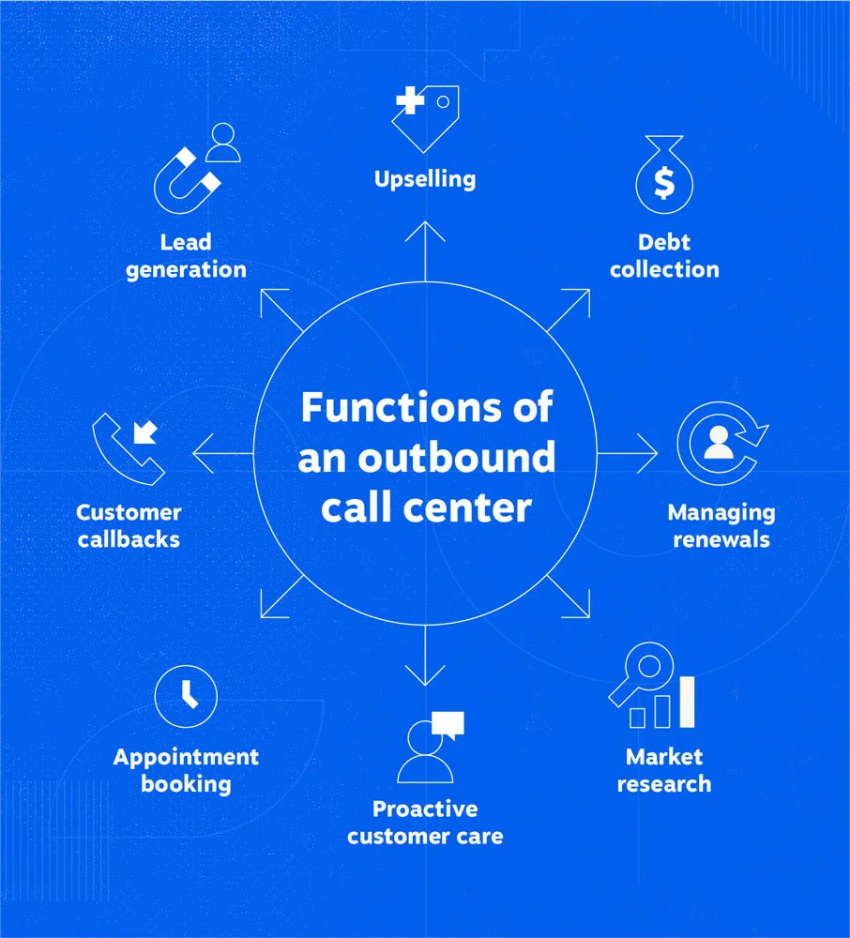
A key function of this software is to improve the productivity of an outbound call center. It achieves this by using features such as auto-dialers and intelligent call-routing systems that help connect call center agents to customers or prospects quickly.
Call center software provides tools for real-time performance monitoring, helping managers make data-driven decisions to enhance operations.
Unlike inbound call center software, which fields customer inquiries, outbound call center solutions are commonly used for sales, customer service, and other call center campaigns.
Evaluating contact centers? Get the buyer’s guide.
This guide reveals the five pillars of a modern platform, key questions to ask, and red flags to avoid.
Key Features to Look for in an Outbound Call Center Software
The best outbound call center solutions offer the following capabilities:
1. Automated dialing systems
Automated dialing systems are a core feature of outbound call center software. They optimize the calling process by automating the dialing sequence, significantly increasing efficiency by reducing agent idle time.
There are three primary types of dialers:
- Predictive dialer: This is the most advanced dialer. It uses algorithms to predict when an agent will be available and dials multiple numbers in advance to ensure that there is always a call waiting as soon as the agent finishes their current call. It is particularly useful in high-volume call centers because it maximizes talk time and minimizes idle time.
- Power dialer: This dialer automatically dials the next contact as soon as the current call is complete. It’s less aggressive than a predictive dialer, ensuring that agents have a brief moment between calls. This can lead to better call quality because agents have time to prepare for each call.
- Preview dialer: This dialer gives agents a chance to see the next customer’s information before deciding to dial. This allows more personalized service, as the agent can prepare for the call by reviewing notes or history, leading to potentially higher success rates in calls that require more context.

2. Call scripting
Outbound call centers use built-in call scripting software to guide sales conversations.
The software lets you create pre-written templates for different customer conversation contexts, such as cold calling, responding to customer inquiries, troubleshooting issues, and de-escalating frustrating situations. Agents can use these scripts as they are or tweak them to match the specific customer interaction.
For example, in industries where regulatory compliance is mandatory, scripts ensure that all the necessary information is conveyed correctly and that legal guidelines are followed. This reduces the risk of non-compliance and potential legal issues.
Call scripts ensure a consistent delivery no matter which agent customers interact with, enhancing the overall customer experience.
3. Call recording and monitoring
When selecting outbound call center software, prioritize advanced call recording and monitoring features that offer real-time tracking of agent-customer interactions.
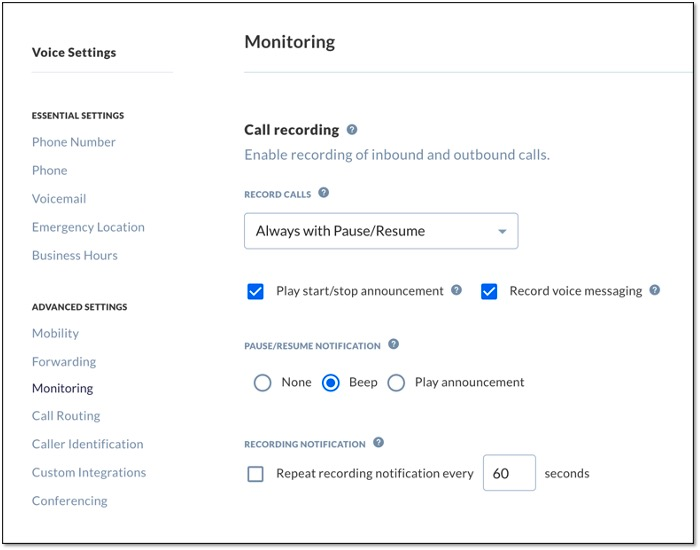
This functionality is essential for supervising call quality and ensuring agents provide a consistently high-quality customer experience. It also plays a crucial role in compliance, allowing managers to verify that conversations adhere to industry regulations and company policies.
Furthermore, the recorded calls serve as useful training material. By reviewing real-life interactions, new and existing agents can learn effective communication strategies and quickly rectify any shortcomings in their approaches, thereby enhancing their overall performance.
This is also applicable to sales teams, as it allows them to analyze conversations as they happen, identifying key customer cues that may signal new sales opportunities or areas where additional product training is needed. These immediate insights help sales professionals adapt their strategies on the fly, significantly increasing the likelihood of closing deals.
Fact: 42% of customers switch providers after two poor interactions, making real-time call monitoring critical for outbound revenue teams. (Nextiva)
4. Reporting and analytics
Choose call center software with robust reporting and analytics features. At the very least, the software should allow you to monitor key metrics, such as the number of inbound, outbound, abandoned, and missed calls throughout each day.
You’ll use this information to optimize your call center operations. For example, if you notice you’re receiving many inbound calls during a particular time of the day, you can assign more agents to cover that period.
However, to truly leverage the power of analytics, look for features that go beyond simple metrics. Advanced software solutions offer detailed insights into call durations, wait times, and resolution rates. They also provide tools for deeper analysis, including trend detection, peak load forecasting, and behavior segmentation.
5. CRM integration
A good call center software integrates with your customer relationship management (CRM) tool for seamless data exchange. This integration facilitates the smooth exchange of data between the two systems, ensuring that agents have immediate access to comprehensive, up-to-date customer profiles, including purchase history, customer preferences, service records, and health scores.
With CRM integration, every interaction within the outbound call center is instantly updated in the CRM, maintaining a consistent and current view of the customer’s status. This synchronization helps in personalizing customer interactions, as agents are always informed about the latest developments in each customer’s journey. It also prevents the duplication of efforts and reduces the chance of errors, which can occur when agents need to switch between multiple platforms.
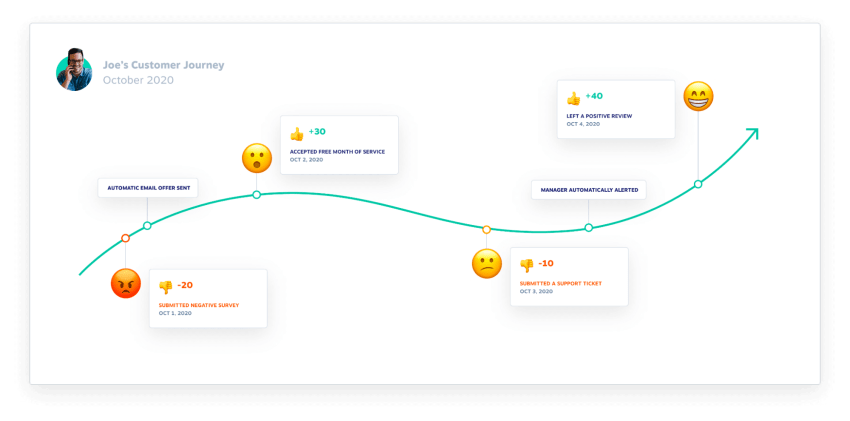
Customer updates in the outbound call center are automatically reflected in the CRM tool. Agents can also use the embedded click-to-dial button to initiate customer calls from the CRM tool without switching to the outbound call center software.
Plus, integrated CRM systems typically include productivity-enhancing features such as click-to-dial functionality. This feature allows agents to initiate calls directly from within the CRM by simply clicking on a customer’s phone number, which eliminates the need for manually dialing or switching applications. This not only speeds up the response time but also ensures a smoother workflow, allowing agents to spend more time engaging with customers.
6. Omnichannel communication
Coordinating customer communications across channels can be challenging. That’s why good outbound call center software lets you centralize all your customer touchpoints — from email to social media and live chat — in one place.
The key benefit of omnichannel communication is that it ensures consistency in customer interactions. For example, if a potential customer first reaches out through email and then follows up with a phone call, the agent handling the call will have immediate access to the email conversation. This continuity eliminates the need for customers to repeat information, thereby enhancing the customer experience and reducing the time spent on each interaction.
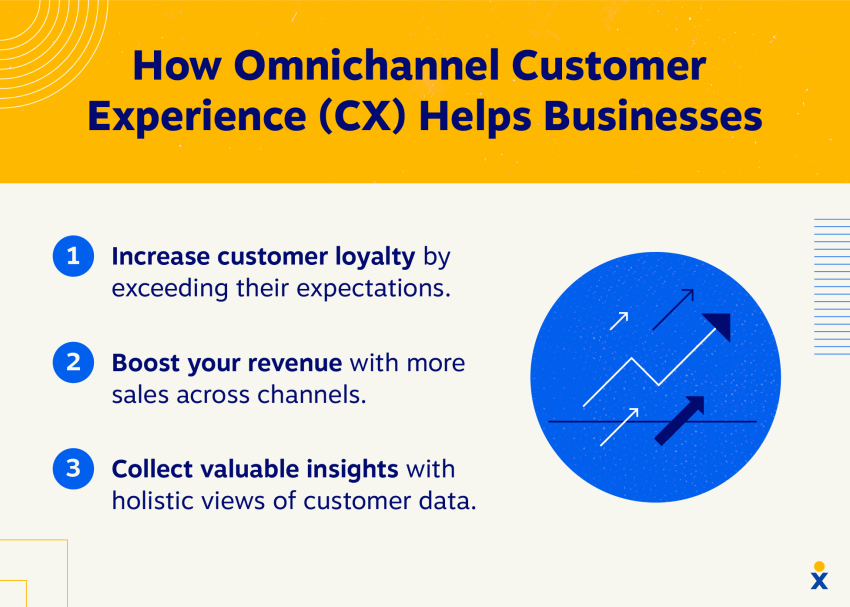
This integrated approach allows for personalized customer service. With full visibility into the customer’s journey across channels, agents can proactively address concerns, anticipate needs, and offer tailored solutions informed by previous interactions.
Related: Automated Outbound Dialing: How It Works & How to Use It
Outbound Call Center Software Use Cases
An outbound call center solution has several business applications, including:
1. Sales and lead generation
Outbound sales software provides end-to-end telemarketing solutions, such as CRM integration, predictive dialing, and performance tracking, for large-scale sales and lead generation campaigns.
CRM integrations give agents access to up-to-date customer and prospect information, including contact details, previous interactions, and purchase history, to tailor sales pitches and improve the chance of success.
Agents can initiate calls from the CRM or outbound calling software via a click-to-call button instead of manual dialing. You can also set up predictive dialers to auto-dial numbers and route the answered calls to available agents for increased call center efficiency.
The software tracks and analyzes performance metrics, such as call volume, conversion rates, and average call duration, helping managers optimize their sales and lead generation campaigns and improve results over time.
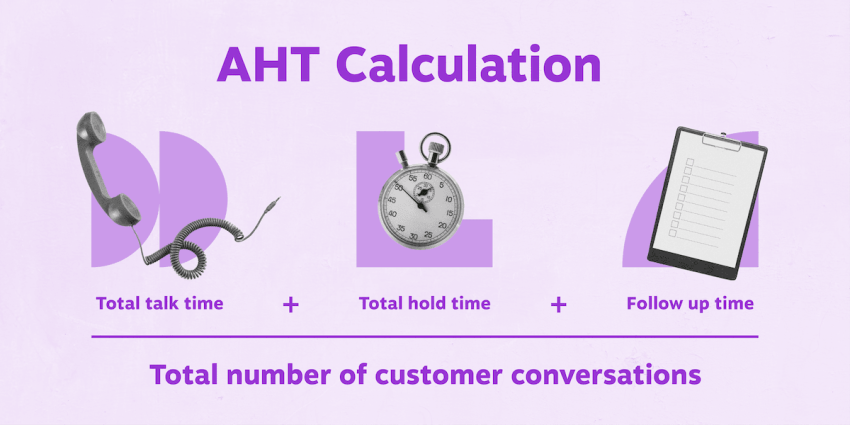
2. Customer satisfaction surveys
Outbound contact centers have embedded survey tools for measuring customers’ feelings after every interaction with your business.
You can build customer satisfaction and net promoter score surveys and automatically administer them at the end of every customer interaction via email, live chat, or SMS. Then, you can filter the results by the most positive and most negative responses.
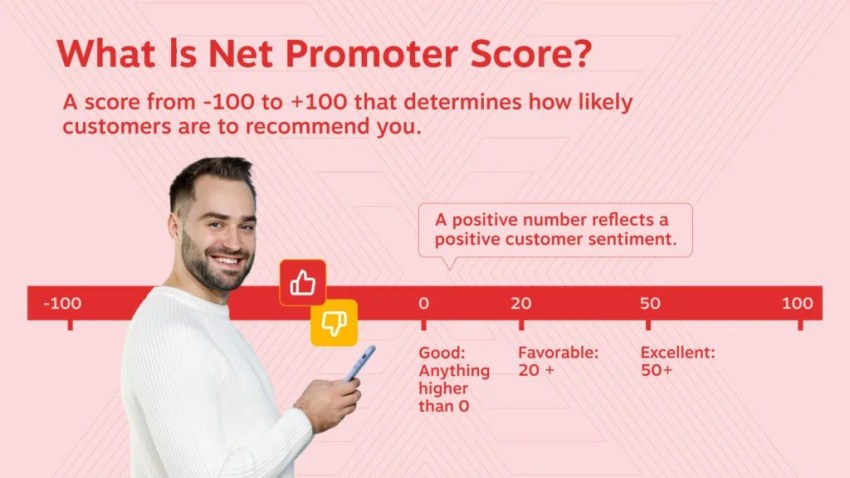
Agents can call the customers in these categories to better understand their perspectives and gather in-depth feedback in real time.
Where does your CX strategy stand with AI?
Take the AI Maturity assessment to get personalized recommendations on how to enhance your CX.
3. Market research
Outbound call center software solutions are useful for gathering first-party data for market research. First-party data refers to data a company collects directly from its customers, usually through surveys, polls, and one-on-one conversations.
For large-scale quantitative data collection, you can use the software’s built-in survey tools to administer polls and surveys across all customer touchpoints, including social media, emails, and live chatbots. Consider organizing direct telephone conversations with small-sized focus groups by customer segment for qualitative feedback.
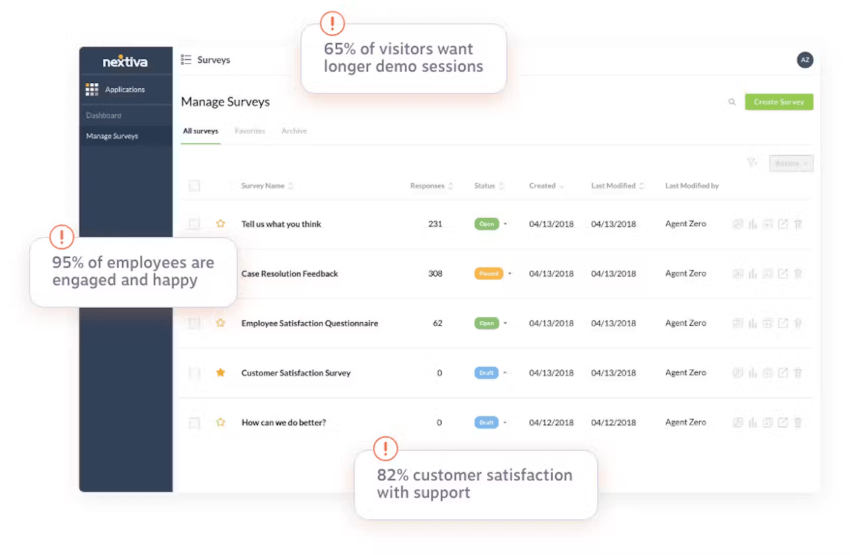
4. Debt collection
Outbound call center software can help you streamline debt recovery through call scripts and automated follow-up messaging.
You can create Fair Debt Collection Practices Act (FDCPA)-compliant call scripts to guide your reps through debt recovery conversations. This ensures that all calls comply with FDCPA rules.
An automatic message can play before connecting calls to a live agent, informing recipients that the call is an attempt to collect a debt.
Instead of manually following up on payments, you can program the call center software to send pre-recorded messages or emails to debtors who have missed payments on specific schedules, making debt collection more efficient.
5. Appointment setting
Outbound call center software can double as a centralized scheduling system. For example, you can block standard business hours for appointments so your customers know when agents or salespeople are available for meetings. You can set up autoresponders for appointment requests made outside business hours and reroute these requests to live agents.
Once an appointment is confirmed, the software will send customers reminders via email or text message at specific intervals so they don’t miss it. Multiple agents can view and manage the same schedule, limiting double bookings or scheduling conflicts.
Best Outbound Call Center Providers
Here are the top outbound call center solutions for your organization. Read on to see which features and pricing stand out for outbound calling.
1. Nextiva
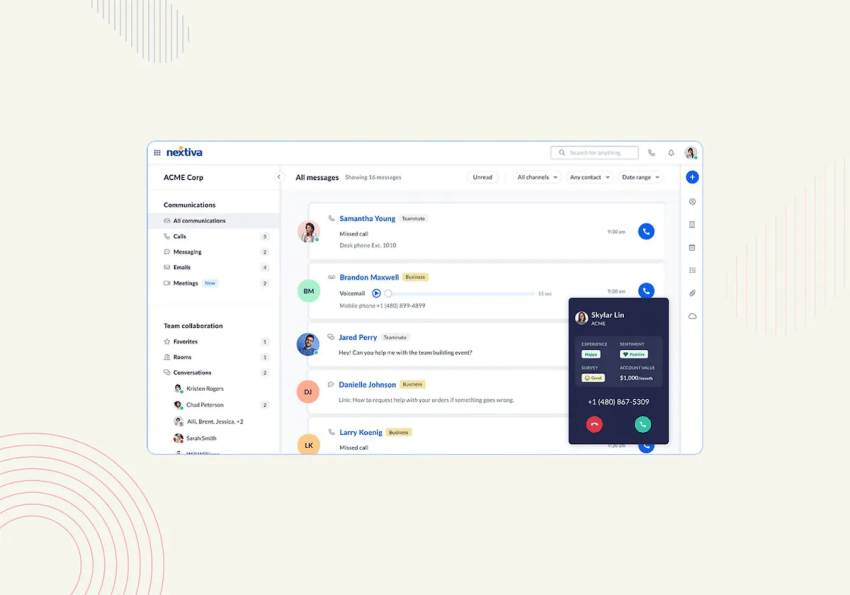
Nextiva is a robust cloud-based call center solution with outbound capabilities. Unlike traditional call centers, which are restricted to a specific location, Nextiva handles all calls via the internet, enabling flexible and distributed communication. This means your agents can deliver the same customer experience from anywhere, whether on-premise or remotely.
Top features
- CRM integration: You can connect Nextiva to other business applications, like your CRM software, giving your agents instant access to customer data for more personalized interactions. They can also make calls directly from the CRM without switching apps, improving call center efficiency.
- Nextiva app: NextivaONE allows agents to make outbound calls, sign into call center queues, and chat with team members on the go. It integrates seamlessly with your existing Nextiva phone system, so you can access all of your contacts, call history, and voicemail from one central mobile app. Plus, it’s easy to use and available for iOS and Android.
- Workforce management: Nextiva provides a suite of tools for efficient call center management, including a call monitoring dashboard, scheduled reports, and visual call analytics. For example, you can track call queues, agent performance metrics, and average call quality in the live call monitoring dashboard. You’ll use this information to optimize your call center operations.
- Automated dialer: Use Nextiva’s click-to-call feature to make outbound calls with a single click. Your call center agents can make phone calls directly from NextivaOne or your CRM software by clicking a single button instead of dialing a phone number manually, eliminating human error.
Why choose Nextiva?
Enterprise-grade mobility
Nextiva’s VoIP systems provide unmatched enterprise-grade mobility, allowing you to conduct business seamlessly, whether you’re working remotely or from the office.
With the NextivaONE App, your business gains a robust, secure solution for full mobility. This technology ensures that you can always stay connected and manage business operations from any location, enhancing flexibility and efficiency.
The app facilitates reliable communication and integrates various business functions into a single platform, streamlining processes and boosting productivity. By adopting Nextiva, you are equipping your business with a powerful tool that supports a dynamic, modern workforce.
Security and reliability designed for enterprises
Nextiva’s security and reliability are specifically engineered for enterprise needs, ensuring your communications infrastructure never lets you down. Boasting eight points of presence and carrier-grade data centers, Nextiva offers an impressive 99.999% uptime.
This means you can consistently maintain flawless communication with your customers without interruption. By leveraging one of the world’s most dependable enterprise-ready voice networks, Nextiva provides you with a seamless, secure, and robust platform that can handle any business demands.
This high level of reliability and security ensures that every interaction is safeguarded, giving you the peace of mind to focus on growing your business and enhancing customer relations.
Actionable voice and business analytics
With customizable dashboards and wallboards, Nextiva enables you to tailor your monitoring tools to meet the needs of your organization, enhancing oversight and driving performance at all levels.
Ready-to-use analytics ensures you can make informed decisions quickly, optimize operations, and boost productivity throughout your company. By leveraging these powerful analytics, you position your business to excel by continuously improving strategies and achieving key performance targets.
Your enterprise communications partner
Nextiva stands out as your premier enterprise communications partner backed by award-winning customer service. Nextiva has garnered top ratings from industry-leading authorities such as Gartner and Frost & Sullivan.
To show our commitment to excellence, Nextiva ensures you have 24/7 access to our customer support team, which is ready to assist you at any time. Additionally, you can enhance your experience with our Professional Services add-ons, which offer hands-on consultations tailored to your specific communications needs.
By choosing Nextiva, you are selecting a partner recognized for its dedication to quality and customer satisfaction, ensuring your enterprise communications are in expert hands.
Track and analyze your entire pipeline for valuable hidden business insights
By monitoring the complete customer journey — from initial lead generation to the end of the lifecycle — you can capture every interaction along the way. This comprehensive tracking and analysis offer a detailed view of your customer engagements, allowing you to refine strategies, enhance customer relationships, and drive business growth.
With Nextiva, you gain the tools to understand the nuances of your operations and make data-driven decisions that propel your company forward.
Pricing
Nextiva’s call center plan starts at $75 per user/month. With this, you get omnichannel capabilities, intelligent call distribution, and a full workflow engine for journey orchestration.
Related: Best Call Center Software to Try in 2025
2. Five9
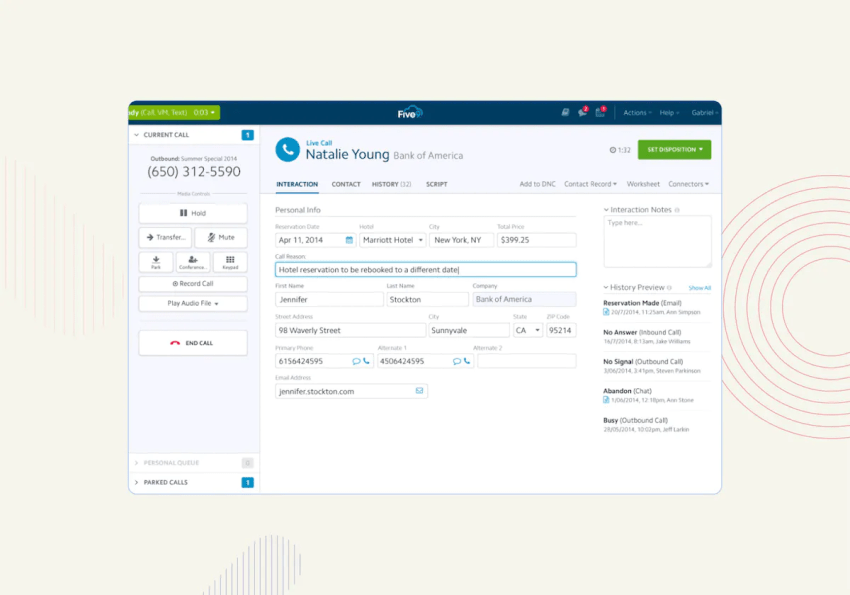
Five9 is a call and contact center solution that mostly caters to mid-sized and enterprise businesses with complex needs. It offers AI-powered predictive dialing, omnichannel communication, and advanced analytics to improve customer engagement and optimize agent productivity.
Top features
- Predictive dialing: Five9 uses predictive dialing to reduce agent wait time in between calls. The system relies on smart software to predict when an agent will be free and how long it will take for the next call to be answered. This minimizes the wait time between calls, improving call center efficiency.
- Omnichannel communication: Five9 brings all your customer communication channels, including email, SMS, and voice calls, into a central platform, allowing you to power customer communication from one place. It helps you create a unified and personalized experience for the customer, regardless of the channel they choose to use.
- Advanced analytics: Five9 provides a central data repository where you can track everything about your call center and agent performance. It also supports real-time and historical performance tracking, speech analytics, and call quality monitoring.
Pricing
Five9’s voice-only plan costs $175/month and offers blended calling features (inbound and outbound), call recording, and 24/7 customer support. To access more features and platforms, you’ll need to upgrade to its higher-tiered plans.
3. Genesys
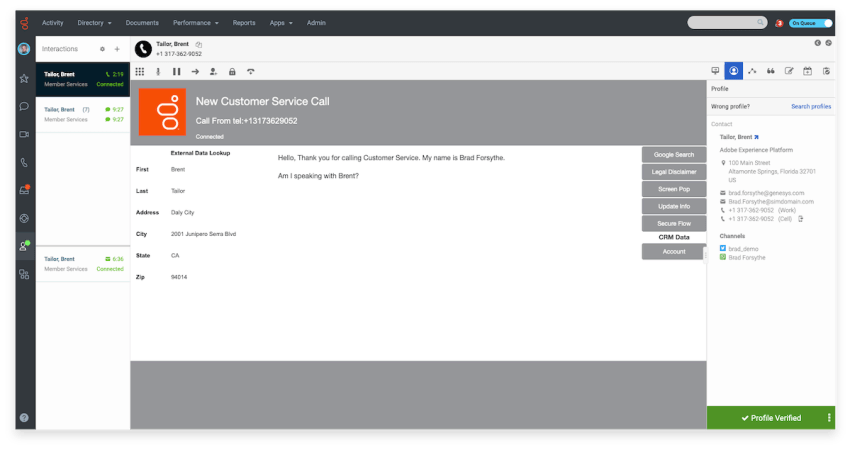
Genesys is a highly customizable contact center platform that offers outbound calling solutions, including workforce engagement and automation tools. It’s also hosted on the cloud, delivering call center flexibility for enterprise businesses.
Top features
- Customer journey orchestration: Genesys analyzes customer behavior and uses this information to personalize their experience at every stage of the customer journey until they make a purchase. It helps you give customers the right information at the right time and nudge them towards action.
- Workforce management: Genesys Cloud’s workforce management tools help supervisors schedule agents, forecast call volumes, and manage staffing levels to ensure optimal service delivery.
- Real-time analytics and reporting: Supervisors can access real-time metrics and insights into contact center operations to identify trends and make data-driven decisions.
Pricing
Genesys’s voice-only plan costs $75/month and offers voice outbound campaigns, performance dashboards, and speech-enabled interactive voice response.
What to Consider When Choosing Outbound Call Center Software
Beyond features, you should consider scalability, pricing, ease of use, and security when choosing a call center software solution. Let’s examine these criteria further.
1. Pricing
Choose outbound call center software that offers the best value for your budget. If you’re a small business, consider choosing a call center provider that offers flexible pricing plans without locking you into expensive long-term contracts.
You should also check for ad-hoc costs outside monthly subscription fees, such as maintenance and license fees, as they can rack up quickly. An outbound call center solution might have a low base fee, but adding all the other fees may blow your budget, so be sure that you can comfortably cover all its costs long-term before investing.
2. Scalability
Choose a call center solution that scales with your organization. It should be able to expand its bandwidth to accommodate business changes, such as an increase in customers, agents, and channels.
Switching call center software every few months makes your team inefficient. Each time a new software is implemented, the team must learn the ins and outs of the new system, which can be time-consuming and confusing. This learning curve can reduce productivity as team members struggle to navigate the software and adapt to its features.
3. Ease of use
Ensure that the call center software is easy to set up and use. Ideally, you shouldn’t require any advanced technical skills and knowledge to implement the software for your call center.
It should have self-service resources for troubleshooting issues independently. A responsive support team should also be on standby to answer your questions and help as needed.
4. Security
Ensure the software has robust security features to protect sensitive customer data. It should offer voice call encryption to protect the information exchanged during outbound and inbound calls.
It should also meet global security standards like SOC 2, HIPAA, and PCI to guarantee data security across all channels.
Related: Call Center Software for a Small Business: Overview & Key Features
Make Outbound a Breeze With Nextiva
You don’t need to invest in separate call center software for inbound and outbound campaigns. You can enjoy the best of both worlds with Nextiva.
Nextiva offers a robust platform with outbound capabilities for lead generation, sales, and market research, and inbound calling features for fielding customer inquiries. It’s affordable, easy to use, and scales with your business.
Learn more about Nextiva’s comprehensive contact center solutions for your business.
Your complete call center solution.
See why top brands use Nextiva to handle calls at scale. Easy to use. Fast setup.
Outbound Call Center FAQs
Yes, an outbound call center can be used for customer service. Outbound call centers are typically associated with proactive customer outreach like sales and product updates, but they’re also effective for service follow-ups, satisfaction surveys, and proactive support. This approach helps businesses address issues before customers initiate contact.
For example, Nextiva’s outbound solutions offer many useful contact center integrations with CRM tools, allowing agents to access detailed customer histories and past purchases. This personalization enhances the customer service experience, improving satisfaction and retention.
To enhance the reputation of your outbound calls, use a STIR/SHAKEN-compliant VoIP provider. This helps inform other telephone companies that your calls are safe, secure, and trusted. Also, ensure your outbound calls last longer than 30 seconds, effectively reducing perceptions of spam and improving response rates. Additionally, training agents to handle calls professionally boosts your campaign’s reputation.
Nextiva offers features like predictive dialers and call scripting to improve call quality. These tools ensure calls are timed well and that conversations are TCPA-compliant.
Yes, through blended call center operations, both outbound and inbound calls can be distributed to the same agents. This strategy increases flexibility and efficiency, optimizes staffing, and reduces downtime by balancing the workload among agents.
Solutions like those from Nextiva support blended environments, allowing agents to switch seamlessly between inbound and outbound calls. This setup not only boosts efficiency but also enhances agent skills across various customer interactions, building a more adaptable workforce.

















 Customer Experience
Customer Experience 

